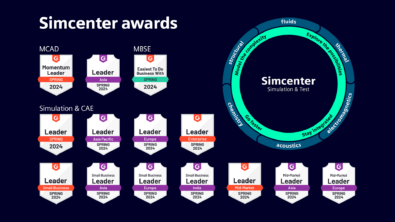Femap with NX Nastran plays a critical role in the design of NASA’s new Orion spacecraft
The Lockheed Martin designed Orion Multi-Purpose Crew Vehicle will carry up to six people into space, provide emergency abort capability, sustain the crew during the space travel, and provide safe re-entry from deep space return velocities. Orion consists of three main structures, the crew module, the service module, and the launch abort module. Finite element analysis (FEA) plays a key role in the design of all three modules and allows the development teams to gain an understanding of the loads and stresses the modules experience in all phases of flight. This understanding is then used to optimize factors such as weight, stiffness and material selection.
The engineers at Lockheed Martin Space Systems face particularly daunting challenges with this kind of design the as the optimization process can take years, and the finite element models can be huge (over one million elements). In addition, more than 900 load cases associated with launch and abort must be taken into account.

The engineers at Lockheed Martin Space Systems use Femap with NX Nastran for the various simulation tasks required for the design, including coarse mesh models provided to the loads and dynamics analysts who run coupled analysis involving both the spacecraft and the launch vehicle. Finer mesh models are also created for detailed stress analysis and part optimization for weight and stiffness. The structural analysts also put Femap’s application programming interface (API) to good use, creating scripts to automate repetitive tasks saving a significant amount of time.
You can read the full case study to find out more about how Lockheed Martin uses Femap with NX Nastran to play a critical role in the design of NASA’s new Orion spacecraft.


